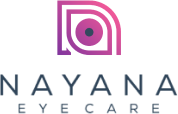Lazy eye, medically known as amblyopia, is one of the most common vision problems in children. It occurs when one eye does not develop proper vision during early childhood, often leading to decreased visual acuity in that eye. Detecting and treating amblyopia early is crucial, as untreated lazy eye can lead to permanent vision impairment. This guide helps parents recognize early signs, understand treatment options, and learn what to expect during recovery.
What Is Lazy Eye (Amblyopia)?
Amblyopia happens when the brain favors one eye over the other, leading the weaker eye to develop poor vision. This can occur due to:
- Strabismus (crossed eyes): Misalignment of the eyes causing the brain to ignore input from one eye.
- Refractive errors: Significant differences in vision between the two eyes.
- Obstruction: Conditions like cataracts that block clear vision in one eye.
Early Signs of Lazy Eye in Children
Parents and caregivers should watch for the following indicators:
- One eye turning inward or outward
- Squinting or closing one eye in bright sunlight
- Difficulty focusing on objects or reading
- Head tilting to see clearly
- Poor depth perception or clumsiness
Early detection, usually before age 7, is key to effective treatment and better long-term outcomes.
Treatment Options for Lazy Eye
Treatment aims to strengthen the weaker eye and improve coordination between both eyes. Options include:
- Corrective Eyewear:
- Glasses or contact lenses to correct refractive errors.
- Patching Therapy:
- Covering the stronger eye to encourage the weaker eye to work harder.
- Atropine Eye Drops:
- Temporarily blurring the stronger eye to stimulate the weaker eye.
- Vision Therapy Exercises:
- Eye exercises to improve focusing, tracking, and coordination.
- Surgery (if needed):
- Rarely required for correcting strabismus or structural issues blocking vision.
Recovery and Prognosis
- Age Factor: Younger children respond better to treatment, with the best results seen before age 7.
- Consistency: Following the prescribed therapy, whether patching, drops, or exercises, is crucial.
- Monitoring: Regular eye exams are necessary to track progress and make adjustments.
- Long-Term Vision: With timely treatment, most children can achieve normal or near-normal vision.
Tips for Parents
- Start regular eye check-ups from infancy to catch issues early.
- Make therapy fun for children to encourage compliance.
- Monitor for signs of strain or discomfort during treatment.
- Communicate with your ophthalmologist about any concerns or progress.
Conclusion
Lazy eye (amblyopia) is highly treatable if detected early. Awareness of early signs, consistent therapy, and regular monitoring are key to helping children achieve optimal vision. Parents play a vital role in supporting their child’s treatment journey. Contact Us

